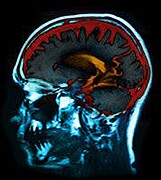Mouse Study Probes Workings of Memory
Learning prompts changes in inner workings of neurons.
|
E-mail this article
Subscribe to news
Printer friendly version
|

(SOURCE: U.S. National Institute of Mental Health, news release, Feb. 21, 2008)
THURSDAY, Feb. 21 (HealthDay News) -- Through a new technique that links a learning experience in mice to changes in the inner workings of neurons, U.S. researchers are gaining a better understanding of how memory works.
This technique, which pinpoints specific cellular components that sustain a specific memory in genetically engineered mice, was developed by a team at the Scripps Research Institute.
For long-term preservation of a memory, the neural connections holding the memory have to be strengthened by incorporating new proteins triggered by the learning linked to the memory, according to background information in a news release about the study.
But scientists haven't been able to determine how these new proteins -- created deep inside a neuron -- actually become part of the specific connections in far-off neuronal extensions that encode memory.
The Scripps researchers were able to trace the destinations of such migrating proteins to pinpoint neural connections (synapses) that hold a specific fear memory in the mice. The researchers found these synapses are distinguished by certain molecular tags that enable the synapses to gather the memory-sustaining proteins.
The findings are published in the Feb. 22 issue of Science. The Scripps team has been using the new technique in series of studies to learn more about the molecular mechanisms of memory.
"Inside neurons involved in a specific memory, we're tracing molecules activated by that learning to see how it ultimately changes neural connections," researcher Mark Mayford said in a prepared statement.
"Remarkably, this research demonstrates a way to untangle precisely which cells and connections are activated by a particular memory. We are actually learning the molecular basis of learning and memory," Dr. Thomas Insel, director of the U.S. National Institute of Mental Health, said in a prepared statement. The institute helped fund the research.
More information
The Society for Neuroscience has more about memory. 
Copyright © 2008 ScoutNews, LLC. All rights reserved. 
HealthDayNews articles are derived from various sources and do not reflect federal policy. healthfinder.gov does not endorse opinions, products, or services that may appear in news stories. For more information on health topics in the news, visit the healthfinder.gov health library.